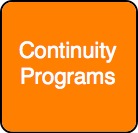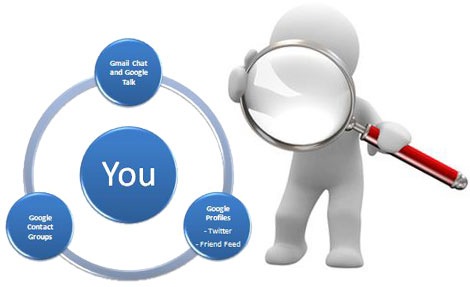Make Money Blogging
Do you want to make money blogging? If you do –
you’re not alone. More and more bloggers are finding that blogging is a
profitable medium. Whether it be to earn a few extra dollars a week to
feed their coffee habit, or making enough money to stop them having to
get a part time job to get through college, or whether they’ve got it to
a point where they are able to make a full time living from their
blogging – there are tens of thousands of bloggers who make money
blogging.
Firstly – lets get our expectations right. Not everyone who tries to make money blogging becomes rich. In fact those who do well from blogging are in the minority. I’m sorry if this disappoints you – but I’m not here to hype this up or make any promises. It is possible to make money blogging – but it takes time and a lot of hard work – and it doesn’t happen for everyone!
For a picture of how realistic it is check out my post – Can You Really Make Money Blogging: 7 Things I know about Making Money from Blogging.
Secondly – let me start by sharing my own top Money Making Methods but below that point you to some great resources and teaching on how to increase your income from blogging.
What follows is a quick summary of my main income streams from blogging. Before you read it though – keep in mind that every blog is unique in how it can make money. Some of the following income streams will work on some blogs a lot better than others – the key is to experiment with as many as possible and see what works best for you.
The following income streams (from a number of blogs) have helped me to earn a six figure income each year for the last 5 years from blogging. I’ve ranked them from highest to lowest.
I hope you find it useful to see the mix and variety of ways that I earn a living from blogging.
 Despite not using it here at ProBlogger any more (here’s why) I continue to use AdSense
with amazing effect on my other blogs. I have them all set to show
image and text based ads and find that 250×300 pixel ads work best
(usually with a blended design). I don’t have much luck with their
‘referrals’ program but their normal ads work a treat and continue to be
the biggest earner for me.
Despite not using it here at ProBlogger any more (here’s why) I continue to use AdSense
with amazing effect on my other blogs. I have them all set to show
image and text based ads and find that 250×300 pixel ads work best
(usually with a blended design). I don’t have much luck with their
‘referrals’ program but their normal ads work a treat and continue to be
the biggest earner for me.
 I
run a variety of affiliate programs on my blogs – most of which bring
in smaller amounts of money that don’t really justify a category of
their own (but which certainly add up).
I
run a variety of affiliate programs on my blogs – most of which bring
in smaller amounts of money that don’t really justify a category of
their own (but which certainly add up).
These include recommending quality products like these here on ProBlogger: Thesis WordPress theme, Yaro’s Blog Mastermind Coaching Program and How to Launch the F*** out of your E-Book (and others) as well as some great products on my photography blog including 123 of Digital Imaging, David DuChemin’s amazing Photography E-Books and Mitchell Kanashkevich’s great ebooks.
The great thing about many of these programs is that they are of such high quality that they sell themselves and I am being emailed from readers who sign up to them thanking me for the recommendation!
 Last
time I did a wrap up of how I make money blogging this category did not
exist for me – I didn’t really have any of my own products to sell at
all. However in the last year or so I’ve released 3 E-books – 31 Days to Build a Better Blog, The Essential Guide to Portrait Photography and Photo Nuts and Bolts: Know Your Camera and Take Better Photos.
While these products all only sell for under $20 they certainly add up
and some months this has been my biggest category of income. The reason
they were only ranking at #3 in the last month was that I didn’t do a
product launch (I wrote about one launch which brought in $72,000 in a week here). This is an income stream I see growing as I add more E-books to my range (expect 3 in the coming few months).
Last
time I did a wrap up of how I make money blogging this category did not
exist for me – I didn’t really have any of my own products to sell at
all. However in the last year or so I’ve released 3 E-books – 31 Days to Build a Better Blog, The Essential Guide to Portrait Photography and Photo Nuts and Bolts: Know Your Camera and Take Better Photos.
While these products all only sell for under $20 they certainly add up
and some months this has been my biggest category of income. The reason
they were only ranking at #3 in the last month was that I didn’t do a
product launch (I wrote about one launch which brought in $72,000 in a week here). This is an income stream I see growing as I add more E-books to my range (expect 3 in the coming few months).
 This is another newer category for me but one that continues to grow.
This is another newer category for me but one that continues to grow.
A continuity program is a site where you earn a recurring income from people who subscribe to a service you offer.
For me this includes two sites – ProBlogger.com and Third Tribe Marketing. Both programs are membership sites and generate monthly income from the thousands of members that they have as a part of them.
 Private
ad sales directly to advertisers have fallen for me in the last year
(they previously ranked #3 on this list). This is partly due to a change
in my own focus but also partly due to the economy as it is. I should
note that this area does vary a little from month to month depending
upon the campaigns we’re asked to run – we’ve had a couple of months
where it actually ranked #2 in the last year.
Private
ad sales directly to advertisers have fallen for me in the last year
(they previously ranked #3 on this list). This is partly due to a change
in my own focus but also partly due to the economy as it is. I should
note that this area does vary a little from month to month depending
upon the campaigns we’re asked to run – we’ve had a couple of months
where it actually ranked #2 in the last year.
This includes ad sales of the 125 x 125 ads here at ProBlogger as well as a campaign or two at Digital Photography School.
 Chitka
continues to be a great performer for me on my blogs. They
traditionally have worked best on product related blogs although their Premium ad units now convert well on a larger range of blogs.
Chitka
continues to be a great performer for me on my blogs. They
traditionally have worked best on product related blogs although their Premium ad units now convert well on a larger range of blogs.
While I’ve focused a little less on Chitika in the last 6 months (mainly as I’ve released my own products and moved a little away from advertising) they do continue to perform well where I use them and over the time I’ve been using Chitika they’ve now earned me over a quarter of a million dollars – as a result I can’t recommend them enough!

Amazon’s affiliate program has been one of my big movers in the last 12 months. I used to make a few odd dollars from it – however in recent times it has become a significant earner for me (in fact it’s now earned me over $100,000 since I started using it). Christmas time (and the lead up to it) is a particularly good time for Amazon – last December it would have ranked #2 on this list.
 The job boards here at ProBlogger continue to grow each month in the
number of advertisements that are being bought. This enabled me to
invest most of the money that they’d earned a while back into getting a
new back end for the boards and to redesign them. These job boards now
bring in over $1000 a month in revenue which is pretty nice considering
that they are so low maintenance to run. They also offer a service to
readers and add value to the overall blog.
The job boards here at ProBlogger continue to grow each month in the
number of advertisements that are being bought. This enabled me to
invest most of the money that they’d earned a while back into getting a
new back end for the boards and to redesign them. These job boards now
bring in over $1000 a month in revenue which is pretty nice considering
that they are so low maintenance to run. They also offer a service to
readers and add value to the overall blog.
The only problem that I face with the job boards is that there are so many bloggers looking for work that the demand for jobs far exceeds the supply. On the good side of things is that advertisers are reporting getting amazing quality of applications.
The other income stream that there was no actual money from in April was book royalties from the ProBlogger Book. These are only paid every 6 or so months (not in April). It’s probably also worth mentioning that authors don’t tend to make a whole lot of money on book royalties – you don’t write books to get rich (unless you sell a lot of them).
Below are a number of articles that I’ve written exploring some of the different ways that bloggers make money.
How to Make Money Blogging
In this page I want to share some information for beginners on how to make money blogging. For a very quick and broad visual intro – check out this Make Money Blogging MindMap which visualizes just SOME of the ways bloggers make money blogging.Firstly – lets get our expectations right. Not everyone who tries to make money blogging becomes rich. In fact those who do well from blogging are in the minority. I’m sorry if this disappoints you – but I’m not here to hype this up or make any promises. It is possible to make money blogging – but it takes time and a lot of hard work – and it doesn’t happen for everyone!
For a picture of how realistic it is check out my post – Can You Really Make Money Blogging: 7 Things I know about Making Money from Blogging.
Secondly – let me start by sharing my own top Money Making Methods but below that point you to some great resources and teaching on how to increase your income from blogging.
What follows is a quick summary of my main income streams from blogging. Before you read it though – keep in mind that every blog is unique in how it can make money. Some of the following income streams will work on some blogs a lot better than others – the key is to experiment with as many as possible and see what works best for you.
The following income streams (from a number of blogs) have helped me to earn a six figure income each year for the last 5 years from blogging. I’ve ranked them from highest to lowest.
I hope you find it useful to see the mix and variety of ways that I earn a living from blogging.
1. AdSense
 Despite not using it here at ProBlogger any more (here’s why) I continue to use AdSense
with amazing effect on my other blogs. I have them all set to show
image and text based ads and find that 250×300 pixel ads work best
(usually with a blended design). I don’t have much luck with their
‘referrals’ program but their normal ads work a treat and continue to be
the biggest earner for me.
Despite not using it here at ProBlogger any more (here’s why) I continue to use AdSense
with amazing effect on my other blogs. I have them all set to show
image and text based ads and find that 250×300 pixel ads work best
(usually with a blended design). I don’t have much luck with their
‘referrals’ program but their normal ads work a treat and continue to be
the biggest earner for me.
2. Affiliate Programs
 I
run a variety of affiliate programs on my blogs – most of which bring
in smaller amounts of money that don’t really justify a category of
their own (but which certainly add up).
I
run a variety of affiliate programs on my blogs – most of which bring
in smaller amounts of money that don’t really justify a category of
their own (but which certainly add up). These include recommending quality products like these here on ProBlogger: Thesis WordPress theme, Yaro’s Blog Mastermind Coaching Program and How to Launch the F*** out of your E-Book (and others) as well as some great products on my photography blog including 123 of Digital Imaging, David DuChemin’s amazing Photography E-Books and Mitchell Kanashkevich’s great ebooks.
The great thing about many of these programs is that they are of such high quality that they sell themselves and I am being emailed from readers who sign up to them thanking me for the recommendation!
3. E-Book Sales
 Last
time I did a wrap up of how I make money blogging this category did not
exist for me – I didn’t really have any of my own products to sell at
all. However in the last year or so I’ve released 3 E-books – 31 Days to Build a Better Blog, The Essential Guide to Portrait Photography and Photo Nuts and Bolts: Know Your Camera and Take Better Photos.
While these products all only sell for under $20 they certainly add up
and some months this has been my biggest category of income. The reason
they were only ranking at #3 in the last month was that I didn’t do a
product launch (I wrote about one launch which brought in $72,000 in a week here). This is an income stream I see growing as I add more E-books to my range (expect 3 in the coming few months).
Last
time I did a wrap up of how I make money blogging this category did not
exist for me – I didn’t really have any of my own products to sell at
all. However in the last year or so I’ve released 3 E-books – 31 Days to Build a Better Blog, The Essential Guide to Portrait Photography and Photo Nuts and Bolts: Know Your Camera and Take Better Photos.
While these products all only sell for under $20 they certainly add up
and some months this has been my biggest category of income. The reason
they were only ranking at #3 in the last month was that I didn’t do a
product launch (I wrote about one launch which brought in $72,000 in a week here). This is an income stream I see growing as I add more E-books to my range (expect 3 in the coming few months).4. Continuity Programs
 This is another newer category for me but one that continues to grow.
This is another newer category for me but one that continues to grow. A continuity program is a site where you earn a recurring income from people who subscribe to a service you offer.
For me this includes two sites – ProBlogger.com and Third Tribe Marketing. Both programs are membership sites and generate monthly income from the thousands of members that they have as a part of them.
5. Private Ad Sales/Sponsorships
 Private
ad sales directly to advertisers have fallen for me in the last year
(they previously ranked #3 on this list). This is partly due to a change
in my own focus but also partly due to the economy as it is. I should
note that this area does vary a little from month to month depending
upon the campaigns we’re asked to run – we’ve had a couple of months
where it actually ranked #2 in the last year.
Private
ad sales directly to advertisers have fallen for me in the last year
(they previously ranked #3 on this list). This is partly due to a change
in my own focus but also partly due to the economy as it is. I should
note that this area does vary a little from month to month depending
upon the campaigns we’re asked to run – we’ve had a couple of months
where it actually ranked #2 in the last year.This includes ad sales of the 125 x 125 ads here at ProBlogger as well as a campaign or two at Digital Photography School.
6. Chitika
 Chitka
continues to be a great performer for me on my blogs. They
traditionally have worked best on product related blogs although their Premium ad units now convert well on a larger range of blogs.
Chitka
continues to be a great performer for me on my blogs. They
traditionally have worked best on product related blogs although their Premium ad units now convert well on a larger range of blogs.While I’ve focused a little less on Chitika in the last 6 months (mainly as I’ve released my own products and moved a little away from advertising) they do continue to perform well where I use them and over the time I’ve been using Chitika they’ve now earned me over a quarter of a million dollars – as a result I can’t recommend them enough!
7. Amazon Associates

Amazon’s affiliate program has been one of my big movers in the last 12 months. I used to make a few odd dollars from it – however in recent times it has become a significant earner for me (in fact it’s now earned me over $100,000 since I started using it). Christmas time (and the lead up to it) is a particularly good time for Amazon – last December it would have ranked #2 on this list.
8. ProBlogger Job Boards
 The job boards here at ProBlogger continue to grow each month in the
number of advertisements that are being bought. This enabled me to
invest most of the money that they’d earned a while back into getting a
new back end for the boards and to redesign them. These job boards now
bring in over $1000 a month in revenue which is pretty nice considering
that they are so low maintenance to run. They also offer a service to
readers and add value to the overall blog.
The job boards here at ProBlogger continue to grow each month in the
number of advertisements that are being bought. This enabled me to
invest most of the money that they’d earned a while back into getting a
new back end for the boards and to redesign them. These job boards now
bring in over $1000 a month in revenue which is pretty nice considering
that they are so low maintenance to run. They also offer a service to
readers and add value to the overall blog. The only problem that I face with the job boards is that there are so many bloggers looking for work that the demand for jobs far exceeds the supply. On the good side of things is that advertisers are reporting getting amazing quality of applications.
9. Speaking Fees
I get asked to do a lot of speaking and increasingly they are paid opportunities. I’m not able to do as many as I would like (mainly because I live in Australia and most of what I’m asked to do is overseas and I only travel 2-3 times a year) – however in April I did a couple of events and the income was enough to include in this list.Other Income
In addition to all of the above there are many smaller incomes. Many of these are from smaller advertising programs that I test but none are big enough to really rate a mention here.The other income stream that there was no actual money from in April was book royalties from the ProBlogger Book. These are only paid every 6 or so months (not in April). It’s probably also worth mentioning that authors don’t tend to make a whole lot of money on book royalties – you don’t write books to get rich (unless you sell a lot of them).
Useful Resources for Bloggers Wanting to Make Money Blogging
A lot has been written on the topic of making money online from blogs. There is a lot of wonderful information out there – but also a lot of hype and sometimes dangerous information.Below are a number of articles that I’ve written exploring some of the different ways that bloggers make money.
Recommended Reading on How to Make Money Blogging
- A Reality Check on Blogging for Money – I don’t like hype – this post attempts to paint a realistic picture of blogging for money.
- How Bloggers Make Money – a post that I wrote in 2005 (updated) which gives a broad introduction to how bloggers make money blogging.
- Making Money from Your Blog – Direct Methods – bloggers make money from blogging in two main ways – directly and indirectly. This post explores some of how they do it directly.
- Making Money Because of your Blog – Indirect Methods – and here’s an exploration of indirect methods.
How to Make Money Blogging from Advertising
- Advertising Optimization – A series of posts on how to optimize advertising on your blog including posts on Traffic, Ad Positioning, Ad Design, Ad Relevancy and High Paying Ads.
- AdSense Tips for Bloggers – an 8 part series of posts that walk bloggers new to Google’s AdSense (the way I make much of my income) through how to use it effectively to make money on their blogs.
- Positioning Your AdSense Ads - a 3 part series on how I literally doubled my AdSense earnings overnight by repositioning my ads
- How to Guarantee that You’ll Never Make More than 0.14 cents per month from AdSense – 10 points to help you earn more money from AdSense
- How Quickly After Starting a Blog Should I put Ads on it? – one of the most common questions I am asked
- 10 Ways to Make Your Blog More Attractive to Advertisers – an Ad Guy tells all
How to Make Money Blogging from Affiliate Programs
- 10 Tips for Using Affiliate Programs on Your Blog – these tips helped me grow my affiliate earnings many times over
- The Power of Getting Readers in the Door at Amazon - a case study on how linking to Amazon can lead to some surprising results
- 9 Reasons Why I am an Amazon Affiliate – Amazon is one of my bigger earners
Other Articles on Making Money from Blogs
- Principles of Choosing a Profitable Topic for Your Blog – key factors to consider before choosing a topic for your blog
- Should I Blog for Money? – before you rush into monetizing your blog – here is a post on whether you should at all
http://www.problogger.net/make-money-blogging/


